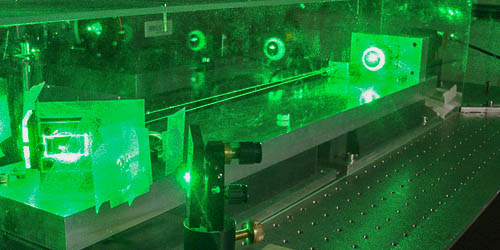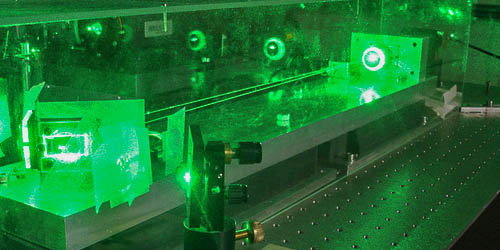A Sextet of Entangled Laser Modes
An optical cavity is like a quantum guitar string. Both a plucked string and a “plucked” cavity can sustain oscillations at one or more of their resonant frequencies, or modes, for example. However, the systems have an important difference: When modes of different frequencies oscillate simultaneously on a classical string, the oscillations are independent of each other. But, for a cavity, concurrent mode oscillations can be statistically correlated, or “entangled.” Researchers are interested in such entanglement, as it can be exploited to transmit information between quantum devices. Now, Marcelo Martinelli of the University of São Paulo and colleagues have successfully entangled six modes of a cavity. The achievement sets a new—unbreakable—record for this system, according to the team’s predictions.
In their experiments, the group shined a green laser into a cavity containing a potassium-titanyl-phosphate crystal. Interactions between the laser and the crystal resulted in the crystal emitting multiple frequencies of light, including six cavity modes that were green or infrared. The team measured fluctuations in the intensities and phases of these six modes, finding a statistical correlation in the values of these two parameters that was indicative of entanglement.
Calculations by the team show that for one laser, one crystal, and one cavity, a maximum of six modes can be entangled. But the group is working on overcoming this limit by connecting multiple cavities and lasers, something they anticipate will allow them to entangle twelve, eighteen, or more modes. Such mode entanglement could allow the linking of quantum devices that operate at different frequencies, a necessity if large numbers of quantum devices are to interact, for example, in a future quantum internet.
This research is published in Physical Review Letters and Physical Review A.
–Sophia Chen
Sophia Chen is a freelance science writer based in Tucson, Arizona.





